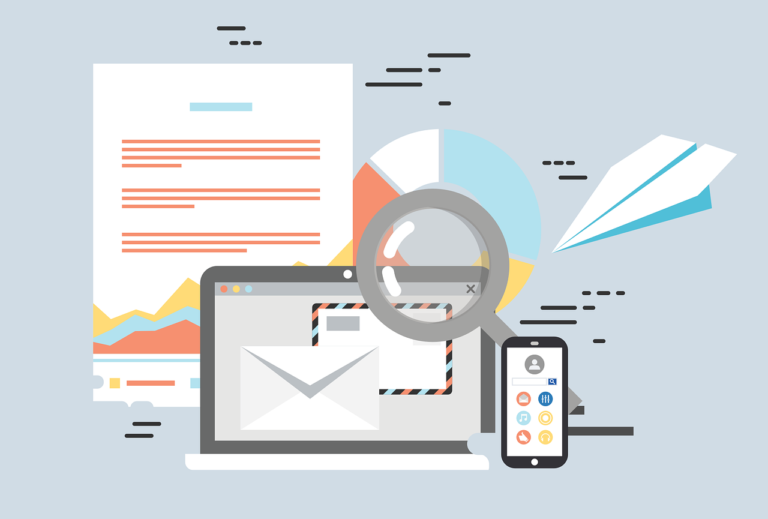As we survey the digital marketing landscape, it seems there are more platforms that are vying for our time and attention. It also means more places for us to deliver value to our audience. However, behind your website, email marketing continues to be the primary channel to deliver your targeted messages. This means that your email marketing campaign is one of the most important tools in your marketing and communications strategy.

Undeliverable Email
But is our email marketing campaign being received? So many articles (like this) have been written to help us get our emails where they need to go. Unfortunately reaching the inbox is now more challenging than it has ever been. According to Return Path;
Regardless of the reason, declining inbox placement rates represent a serious concern for marketers. With one out of every five emails failing to land in the inbox, brands are missing out on a full 20% of their opportunities to connect with customers and earn their business.
There are many factors that impact whether our information/offer will get to our intended audience. SendGrid outlines four key components to determine if your email marketing campaign will be delivered. They are;
- Message Infrastructure Health
- Message Content
- Sender History and Filtering
- Receiving System’s Availability
Interestingly enough, you can impact 3/4 of these factors. Can you guess which ones? The only item that is truly out of your control is the receiving system’s availability. All other elements you have the ability to impact or control. It’s not by manipulating spam filters or blasting out 5 times as many emails in one week to gain a better return.
Greater Email Marketing Campaign Returns
So how do we capitalize on the missing 20% and maximize the existing 80%? I’m glad you asked. There are many tactics that will help you achieve this end. But this post is not your typical how-to. I’d like to step back a moment and look at an approach that will guide your email marketing strategy.
The 2015 Deliverability Benchmark Report produced by Return Path, states that the greatest email delivery rate was achieved by industries that relied the heaviest on customer relationships. Think about that for a moment. The greatest returns are not achieved by the best technology, the most creative campaigns, or the highest budget. These results were due to the development of deep customer relationships.
So if the key to getting your email marketing campaign delivered is deep customer relationships, how do we foster them? As we connect with our customers and influence our buyers via email, we must consider the following elements to effectively reach them.
- Trust: We know that all relationships are built on trust. Why is it so difficult to realize? Because trust is developed over time and requires many interactions. It requires patience. Industries like retail, health & beauty and apparel achieve stronger placement because they are typically high-touch environments. Real interactions with real people provide greater levels of trust. If you want to connect with your audience, humanize your interactions. Make it personal. Understand the need in the context of their environment, and deliver value in a meaningful way. John Kottcamp says it best;
Companies that excel at delivering rich, personalized online experiences not only produce more loyal customers but also outperform their competition on the stock market, according to a recent five-year study conducted by Forrester Research. (source: MarketingProfs)
Personalized means more than tagging a first name in the greeting. It means gaining a deeper understanding of where they have visited, what their interests are, and connecting your value to that information in an authentic, meaningful way.
- Analysis: Developing trust in a relationship is like strengthening a bridge between you and your customer. It starts on shaky ground and then begins to gain strength as you continue to provide value according to their need in the moment. As you interact with your customer, it is important that you never stop listening. Listening or analyzing the feedback they provide in the form of interactions with you and your brand. This requires time and talent. The proper analysis of traffic and customer data will further ensure that you are a trusted provider. Data is a double-edged sword. It can make you a relevant star, or it can make your brand feel disconnected and irrelevant. Which leads us to our final point.
- Relevance: I was at the local coffee shop the other day, chatting with a friend. We were having a discussion about how many vacationers were stopping in. A gentleman overheard our conversation and tried to make a joke, but it turned out to be an awkward moment as we didn’t understand what he was referring to. This was not about his joke, but about the fact that in that moment we could not relate what he was saying to our conversation. This made his joke awkward and irrelevant. The point is, if you want to develop trust with your audience, you must be able to relate to them in the proper context.
“Achieving such personalization requires knowing deep context: not just a customer’s demographic data but also the time and location she accessed content, the search terms she used to find it, the referring site that directed her toward it, and—most important—her behavior before, during, and after consuming it…” (source: John Kottenkamp)
This approach works. Maximizing each email marketing campaign begins with content that builds trust, is built on proper analysis and is relevant to the customer.
Relevancy is the marketer’s secret weapon, and the fastest path to revenue. Emails with personalized subject lines are 26% more likely to be opened and marketers have found a 760% increase in email revenue from segmented campaigns. (source: Campaign Source)
In summary, the ability to deliver your email marketing campaign is not based on whether you can sidestep spam filters. It is in your ability to develop trust with your customers. If you can not do this with confidence, take the time you need to develop your marketing and communication strategy with these important elements at the helm.
These recommendations are simply the tip of the iceberg. What are other ways you’ve discovered help your email marketing campaign get delivered? Share them in the comments below!



